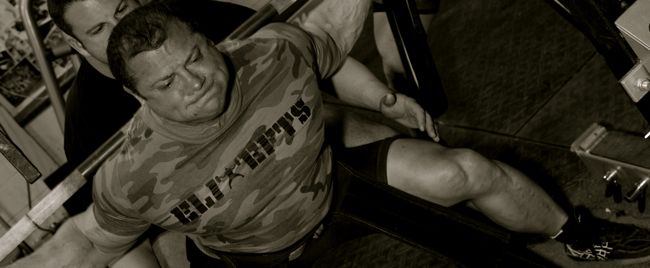
Vladimir Zatsiorsky in his book Science and Practice of Strength Training identifies four key variables in designing an effective strength training program.
- Overload must be applied
- Training must be specific
- Volume and intensity should vary over time periods
- Individualization
Let's look at the principles Dr. Zatrsiorsky identified and how they hold true to you and accomplishing the goals of your strength training program.
Overload must be applied - One of the first things we learn in his physiology is the overload principle. This principle states that in order to gain in strength, muscle size, or endurance from any training, you must exercise against a resistance greater than that “normally” encountered. If you use the same amount of resistance for the same number of repetitions every workout, there will be no continued improvement beyond the point to which your body has already adapted. This sounds great! It is, except you will eventually encounter problems! Your body is designed to adapt to stresses imposed during training. As you continue to gain strength, the amount of stress required to induce additional adaptation will increase to the point your recuperative powers simply can’t keep up.
Training must be specific - Specificity is the transfer of training to your desired training results. An example of this principle would be to incorporate band work in a period/block of concentrated loading into your deadlift workout with the goal of improving your speed and lockout power which will ultimately lead to an increase in your competition deadlift, your true goal. If the bands increase your speed and lockout and you get a PR, then this would be sport specific training with a true transfer of training. These tools are leveraged to increase your deadlift. If you improve your speed and get better against the bands, then who cares that your specific goal of increasing your deadlift was not met? This may be a great party trick but it ain’t getting you a deadlift PR! What about other sports like football? It means getting the greatest bang for your buck from your strength and conditioning regiment. As an athlete advances, it's more important to include dynamic correspondence (exercises that enhance movement patterns in the particular sport). However, remember weight training will never exactly mimic the actual skills training requires to excel in sports. If it were an exact one-to-one correlation, all one would ever have to do is perform the movements of the sport with added resistance. If a linebacker needs to work forceful hip extensions so he can plug a fullback in the hole on an isolation (lead) play, besides practicing the actual skills in practice, he would need to do exercises like Compensatory Acceleration Training deadlifts, tire flips or box squats to name a few. All of these build the posterior chain, which allows for more violent and explosive hip extension. This is an example of dynamic correspondence without exactly duplicating the movement of the sport.
 Volume and intensity should vary over time periods - How do we overcome the problems with overload principles we encounter as we advance? It’s actually not super complicated. We must systematically cycle volume and intensity. Athletes can easily burn out their CNS when lifting above 90% for three weeks in a row and actually begin to regress. If you want to completely satisfy the principle of specificity - look at deloading. A deload in this case would be <70% total volume (sets X reps X weight.) Not all workouts should be or can be “balls to the wall!”
Volume and intensity should vary over time periods - How do we overcome the problems with overload principles we encounter as we advance? It’s actually not super complicated. We must systematically cycle volume and intensity. Athletes can easily burn out their CNS when lifting above 90% for three weeks in a row and actually begin to regress. If you want to completely satisfy the principle of specificity - look at deloading. A deload in this case would be <70% total volume (sets X reps X weight.) Not all workouts should be or can be “balls to the wall!”
Individualization - (The Principle of Individual Differences) This principle is an acknowledgment that we all have different genetic blueprints. Some people are fast gainers, some people are slow gainers. Some people have primarily fast twitch muscle fibers, some have majority slow twitch. Some people are just old school blood and guts flat out tough, and others are prancing poodles. The bottom line is we are all different and will react differently to programs or nutritional regiments. Individualized programs need to meet an individual’s needs. No two people are exactly the same. Don’t use this as an excuse if you do not believe you have optimal genetics. Remember, heredity played the cards but your training deals the hand.
Train smart and train hard.








